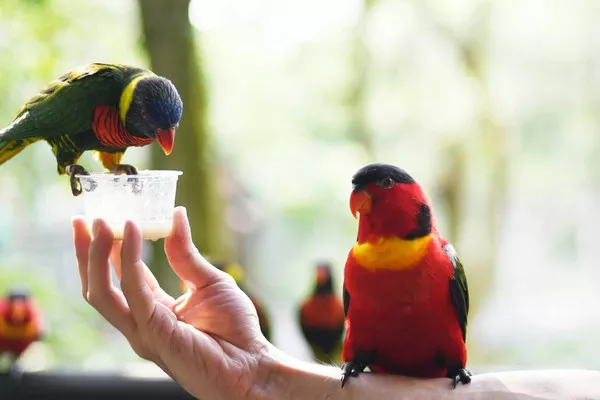Rattlesnakes are one of the most well-known venomous snakes in North America. Recognizable by the rattling sound they make when threatened, these reptiles play an essential role in the ecosystem. They help control rodent populations and serve as prey for larger animals. For those who live in rattlesnake-prone areas, it is crucial to understand their activity patterns to stay safe and avoid unnecessary encounters. This article explores when rattlesnakes are most active, why their activity levels change throughout the year, and what precautions to take during peak seasons.
Understanding Rattlesnake Behavior
Rattlesnakes are cold-blooded reptiles, which means their body temperature depends on the environment. Unlike warm-blooded animals that can regulate their body temperature internally, rattlesnakes rely on external heat sources such as the sun and warm ground. Their behavior is closely tied to seasonal temperature changes, affecting when and where they are most active.
In general, rattlesnakes are most active during the warmer months when temperatures are neither too cold nor too hot. Their activity levels peak during spring and early fall, with variations depending on geographic location, climate, and species.
Seasonal Activity Patterns of Rattlesnakes
Rattlesnakes follow a predictable cycle of activity throughout the year. Below is a breakdown of their behavior by season:
Winter (December – February): Dormancy Period
During the winter, rattlesnakes enter a state known as brumation, which is similar to hibernation in mammals. Brumation allows them to conserve energy while avoiding the cold temperatures that make it difficult for them to function. In this period, they seek shelter in dens, rock crevices, caves, abandoned burrows, or under logs. These dens are often shared with other snakes to maintain warmth.
In regions with milder winters, rattlesnakes may emerge briefly on warmer days, but they are generally inactive.
Spring (March – May): Increased Activity
As temperatures begin to rise, rattlesnakes become more active. This is one of their peak seasons since they emerge from their winter dens in search of food and mates. Their metabolism speeds up with the warmer weather, and they start hunting small rodents, birds, and other prey.
During this time, rattlesnakes are commonly seen in grasslands, deserts, rocky hillsides, and forests. They prefer basking in the sun during the morning and early evening while avoiding the midday heat. Spring is also a breeding season for many rattlesnake species, increasing their activity as they search for mates.
Summer (June – August): Nocturnal Shift
Summer temperatures can become extreme, especially in desert regions. To avoid overheating, rattlesnakes adjust their activity patterns. Instead of being active during the day, they shift to a nocturnal schedule, hunting and moving around at night when it is cooler.
Evening and early morning hours are the most common times to encounter rattlesnakes in the summer. They often seek shade during the daytime, hiding under rocks, logs, or in burrows to escape the heat. Despite their nocturnal shift, encounters with humans may still occur, especially in areas where people hike or camp in rattlesnake habitats.
Fall (September – November): Another Peak Activity Season
As temperatures cool down, rattlesnakes experience another surge in activity. This period is critical for them to hunt and store enough energy before winter. During the fall, they return to being active in the mornings and evenings while reducing their movement at night.
This season is also the time when young rattlesnakes are born. Unlike most reptiles, rattlesnakes give birth to live young rather than laying eggs. Newborn rattlesnakes are fully independent from birth and already possess venom, making them just as dangerous as adults.
As winter approaches, rattlesnakes gradually return to their dens, preparing for their brumation period.
Regional Differences in Rattlesnake Activity
While the general seasonal activity pattern applies to most rattlesnakes, regional differences affect when they are most active. Below are some variations based on climate and geography:
Desert Regions (Arizona, New Mexico, Nevada, etc.): Rattlesnakes in these areas are most active in the spring and fall, avoiding extreme summer heat by becoming nocturnal.
Temperate Climates (California, Texas, Southeastern U.S.): Rattlesnakes may be active for a longer duration, especially in areas where winters are mild.
Northern States and High Elevations: Snakes in these areas have a shorter active season, usually from late spring to early fall, due to colder temperatures.
How to Stay Safe During Rattlesnake Season
If you live in or visit areas where rattlesnakes are common, it is essential to take precautions to avoid encounters. Here are some safety tips:
Stay on Marked Trails: When hiking, stick to well-trodden paths and avoid walking through tall grass, rocky crevices, or dense vegetation where snakes might be hiding.
Wear Proper Footwear: Sturdy boots and long pants provide some protection against snake bites.
Be Aware of Your Surroundings: Always look where you step and check logs, rocks, and shaded areas before reaching in or sitting down.
Avoid Hiking at Night: Since rattlesnakes are more active at night during the summer, it is safer to hike during daylight hours.
Give Rattlesnakes Space: If you encounter a rattlesnake, back away slowly and do not attempt to move or provoke it. Most bites occur when people try to handle or kill the snake.
Keep Pets on a Leash: Dogs are naturally curious and may approach snakes. Keeping them on a leash reduces the risk of an encounter.
Know Emergency Procedures: If bitten, seek medical attention immediately. Do not attempt to suck out the venom or apply a tourniquet. Stay as calm as possible and keep the affected limb immobilized while waiting for help.
Conclusion
Rattlesnakes are most active in the warmer months, with peak activity occurring in spring and early fall. Their behavior shifts depending on temperature, causing them to become nocturnal during hot summer months and dormant in the winter. Understanding when rattlesnakes are most active can help people take precautions and minimize the risk of encounters. By respecting their role in nature and following safety guidelines, humans and rattlesnakes can coexist peacefully in their shared environments.
Related Topics:






















